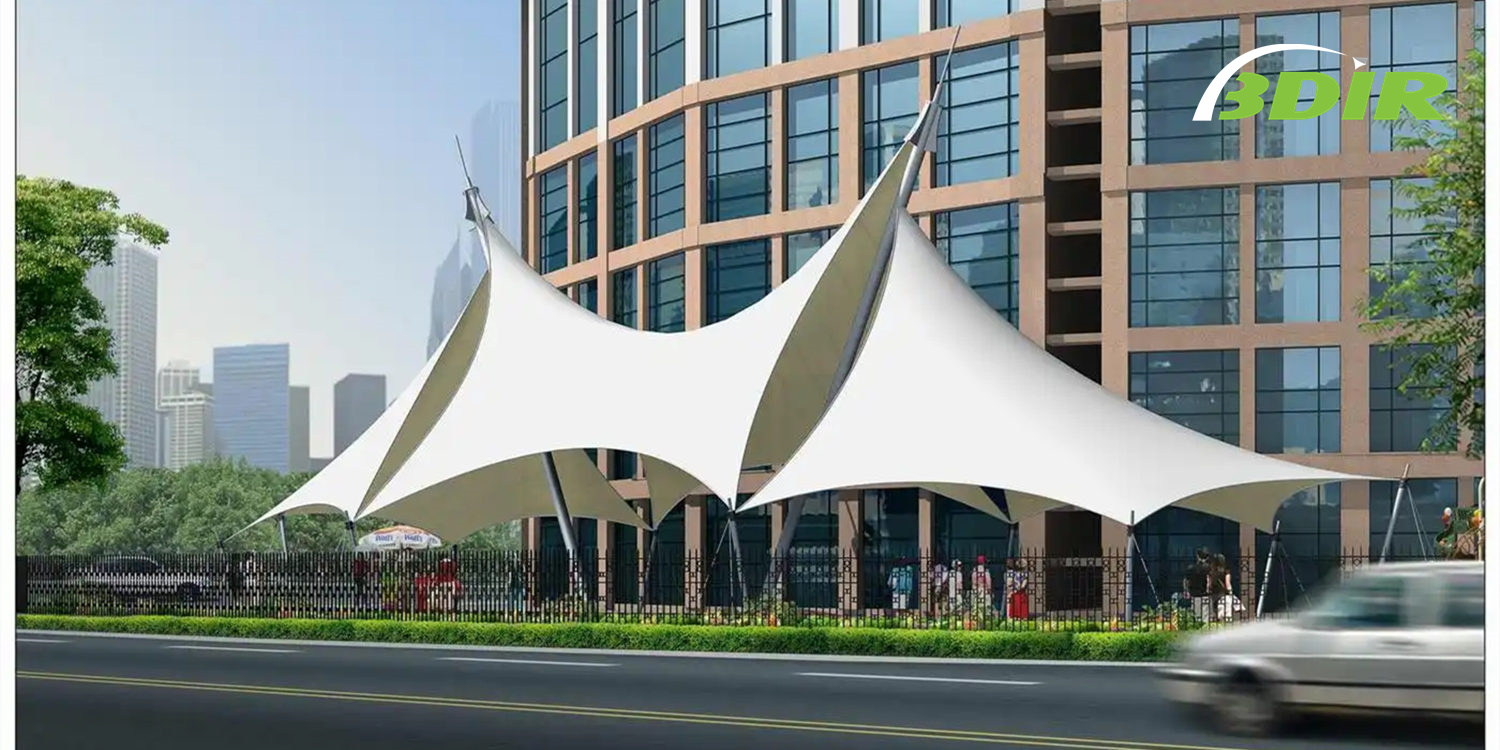Tensile structure is a name that has been gaining popularity among architects as it is getting common in this modern era due to its benefits and flexible design. Although tensile architecture is not something new as it has a history as well, the innovative structure makes its way to a lot of places where it can easily be witnessed.
Almost everyone has seen this modern 21st-century architecture somewhere. It is mostly used as a roof as well as places like sports complexes, exhibition venues, storage areas, car parking spaces, and warehousing. Also, it is known as an economical as well as an attractive solution to creating open-air canopies and facades.
Types of Tensile Structures
Being a renowned structure, it has classifications due to the forces acting in the tensile structure. On the basis of these, it is divided into a few types.
Three-Dimensional Structure
This type of tensile structure is combined elements that are in tension primarily along with the compression that occurred to a central mast and also into the ground. The three-dimensional structure can be seen as a roof for sports arenas.
Three-dimensional structures divided into a few more types,
- 3D cable trusses
- Bicycle wheel
- Tensegrity structure
Linear Structure
As the name suggests, it has all members in linear forces, which are maintained by compression yet the amount of load is carried out by tensile members. One of the common examples of linear tensile structures is bridges with a suspended cable. This structure is classified into the following types,
- Draped cables
- Straight tension cables
- Suspension bridges
- Cable trusses
- Cable-stayed trusses or beams
Surface-Stressed Structure
Surface-stressed tensile structure is similar to the three-dimensional and linear structure, but only surface members are not the same as these types have tension bearing members. One of the popular examples of this type is the fabric tensile structures, where the amazing designed fabric in tension is held by vertical pillars.
Below are some types of surface-tensile structures,
- Prestressed membranes
- Gridshell
- Fabric structure
- Pneumatically stressed membranes
Benefits of Tensile Structure
Tensile architecture is quite known to developers and owners all over the world. These structures offer an incredible opportunity for covered areas. Moreover, the structure’s versatility makes it a center of attention. The benefits of the tensile structure are below,
Amazing Durability
Being made with a combination of different design materials, these structures are durable and can easily withstand extreme climate conditions for a few decades.
Low maintenance
Tensile structures are known for low maintenance, and that’s the reason it is widely used. There is no hassle to keep the maintenance process after every short span.
Great Translucency
Tensile structures provide great daytime light that can make the below space inviting and comfortable. are translucent
Cost-Effective
Due to its lightweight and economical tensile structure, it is considered a cost-effective option as compared to traditional materials.
Earthquake-proof
The tensile structure has a low building load and is elastic, which makes it earthquake-proof.
Long Span structure
The tensile structure provides much-required column-free space as the membrane structures don’t need extra structures to support the roof.


